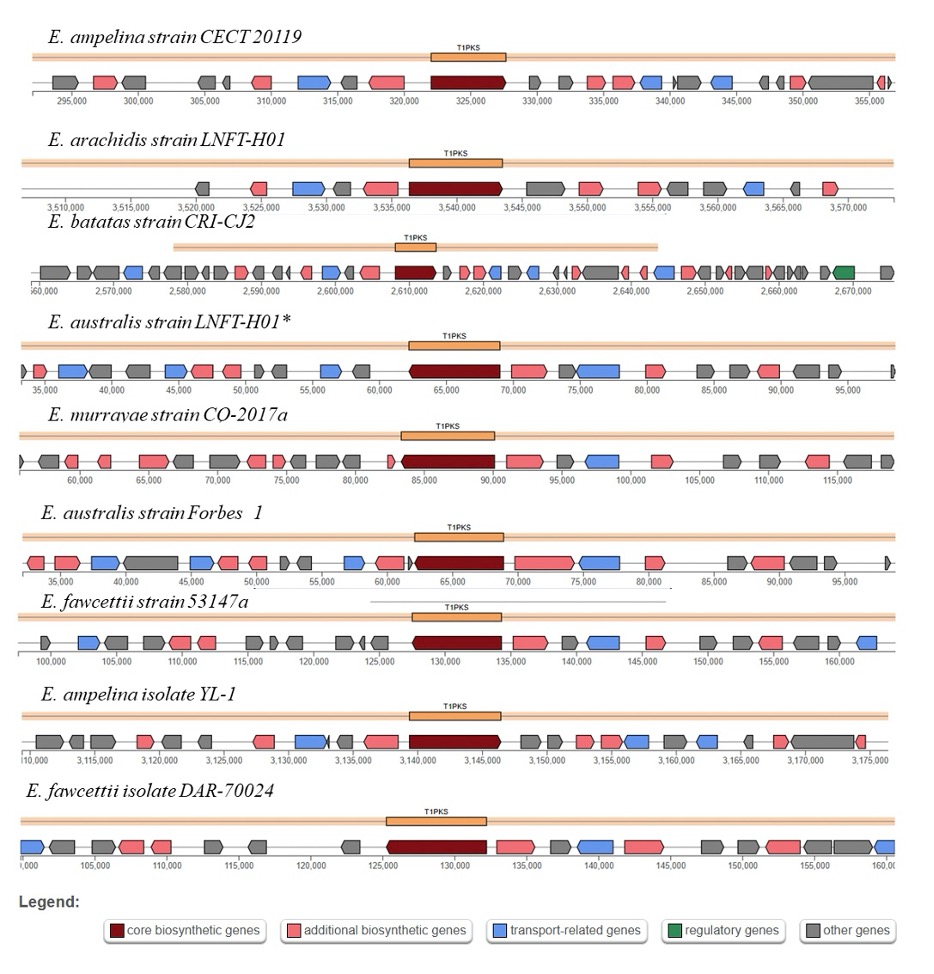VOLUME 17 NUMBER 1 (January to June 2024)

SciEnggJ. 2024 17 (1) 059-070
available online: February 15, 2024
DOI: https://doi.org/10.54645/2024171LLY-35
*Corresponding author
Email Address: lsdacones@up.edu.ph
Date received: November 16, 2023
Date revised: January 6, 2024
Date accepted: January 14, 2024
ARTICLE
Presence of elsinochrome and other putative effectors in select genomes of the plant pathogen Elsinoë spp. based on in silico analysis
Diliman, Quezon City, 1101 Philippines
The genus Elsinoë comprises obligate fungal pathogens known to cause scab disease in various crops, including mango, peanut, and sweet potato. In other fungal plant pathogens, secreted proteins or effectors and other secondary metabolites have been characterized as being involved mainly in stimulating host responses, such as the eventual manifestation of distinct symptoms on specific crops or as indications of host specialization. In line with this, variability in the genes conferring for the corresponding effector proteins and other secondary metabolites has also been identified between species of the same fungal genus and has helped in elucidating phylogenetic relationships and in determining host preferences. Available draft genomes of six plant pathogenic Elsinoë spp. retrieved from the NCBI were utilized in this study to assess their variations in terms of putative effectors and other secondary metabolites, along with in silico descriptions of their potential biological function and evolutionary relationships. Genome prediction revealed, on average, 3000 cytoplasmic effectors and approximately 280 apoplastic effectors across the species. Pathogenicity and virulence effectors such as melanin and elsinochrome were specifically detected in all the Elsinoë spp. genomes, with considerable variation between species. Ontology analysis revealed putative genes related to toxin activity, detoxification, and carbohydrate binding in Elsinoë. Furthermore, phylogenetic analysis of the internal transcribed spacer (ITS) and elsinochrome biosynthetic genes revealed clustering of Elsinoë spp. based on the host. These findings suggest that the disease status of different plant hosts infected by different Elsinoë spp. varies.
© 2025 SciEnggJ
Philippine-American Academy of Science and Engineering